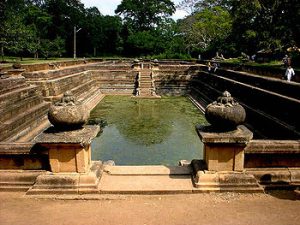Uncharted territory is a thing of the past, but there are still plenty of fabulous places to visit before they’re overrun by hordes of spring breakers. And if there’s anyone who can predict the top 5 up-and-coming travel destinations, it’s Patricia Schultz, author of the New York Times Best Seller 1,000 Places to See Before You Die.

At a travel show earlier this year, Schultz shared her favorite emerging destinations, ranging from forgotten marvels of Asia to splendid and mysterious regions of South America and the Caribbean. Many of these places are just opening their doors to tourists for the first time, meaning if you go now, you can see them before it’s too late.
First up is Burma, officially called the Republic of the Union of Myanmar, which has recently begun encouraging Western tourism. Schultz compares Burma/Myamar, which borders Bangladesh, India, Laos, Thailand and China, to Bangkok “20 or 30 years ago.” Many citizens can’t get passports and Schultz reports that they are, as a result, very welcoming and appreciative of foreign visitors. She notes the country’s abundance of grand colonial hotels and its “ancient, untouched past.”
Popular attractions include the modern cities of Yangon and Mandalay, ancient Bagan and Mruak U, as well as nature trails, beaches and religious sites. One of the most popular and unique ways to view Burma/Myanmar is by hot air balloon.
Next up on Schultz’s list is Cuba. Thanks to the reestablishment of diplomatic relations with the island nation, Americans will be able to visit for the first time in over 50 years. That said, the country’s relative isolation presents a bit of a Catch-22 for would-be travelers. Its history is well preserved and its rich music and dance traditions remain arguably unrivaled in the Caribbean, but its infrastructure is very limited, especially for tourism.
To date, there is no tourism board and although a US Embassy will be opening soon, visitors still face many challenges. For example, you can’t just head off on your own (although chartered flights are now available from Miami, and Carnival will become the first cruise line to add Cuba to its itinerary next spring); hotel accommodations are limited and visitors must spend a specified number of hours engaged in activities related to cultural exchange. Group tours, therefore, are the only option available for American tourists at this point.

The “pearl of the Indian Ocean,” according to Schultz, is Sri Lanka. The leaf-shaped country is approximately the size of West Virginia and Schultz refers to it as “India in miniature.” One of the lesser known facts about the Democratic Socialist Republic of Sri Lanka (known as Ceylon until 1972) is that it is the world’s largest tea exporter and was among the first country’s to institute ethical production practices. Its citizens are also highly educated and, as Schultz eagerly points out, the island boasts the highest literary rate in Asia.
Sri Lanka is located off the southeastern tip of India near Maldives. It is home to a number of different ethnic groups, each with their own religions, so colorful religious festivals are never in short supply. The country also offers everything from surfing and safaris to whale watching and an impressive 8 UNESCO World Heritage Sites. Its dome-shaped temples, or dogobas, reflect 2,500 years of history, beginning with Anuradhapura, the country’s first capital, which was founded about 500 BCE.
Colombia, often perceived as a risky, dangerous and unwelcoming destination, is next on Schultz’s list. She notes that these perceptions are incorrect, as is the idea that Colombia has already come and gone as a hot “new” tourist destination. The homeland of Gabriel García Márquez is still up and coming, and Schultz describes its people as some of the most educated, courteous and fun in all of South America.
She considers Bogatá, the country’s capital city nestled just west of the Andes, to be “sophisticated.” Popular attractions include the market at Paloquemao Square and the Gold Museum, which houses a collection of pre-Hispanic artifacts. Cartagena, another popular destination, has more of a Cuban feel according to Schultz, with plenty of African-American influence and colonial architecture.
Last on Schultz’s list is Turkey. She admits that Turkey isn’t exactly emerging—it’s been growing in popularity since the 1980s— but explains instead that it is “misunderstood.” The republic is bordered by over half a dozen different countries: Syria and Iraq to the south, Iran and Armenia to the east, Georgia and Bulgaria to the north and finally Greece to the west. Its main draw, for Schultz, is the city of Istanbul; not only is the capital city one of the safest places to visit, but it’s also a bi-continental city that spans both Europe and Asia.

The result is a unique form of cultural exchange, with architectural marvels aplenty, especially mosques. Schultz notes that the city is also home to a very young population that makes for a robust nightlife, filling many outdoor spaces until midnight, and small plates are popular with locals and tourists alike. Because the country has been inhabited since the Paleolithic Age, the remains of many ancient civilizations can be found in and around its cities.
These five emerging destinations can offer travelers an unprecedented glimpse into truly foreign ways of life, many of which seem forgotten by time. But take Schultz’s advice and start planning before they’re discovered by everyone else.

